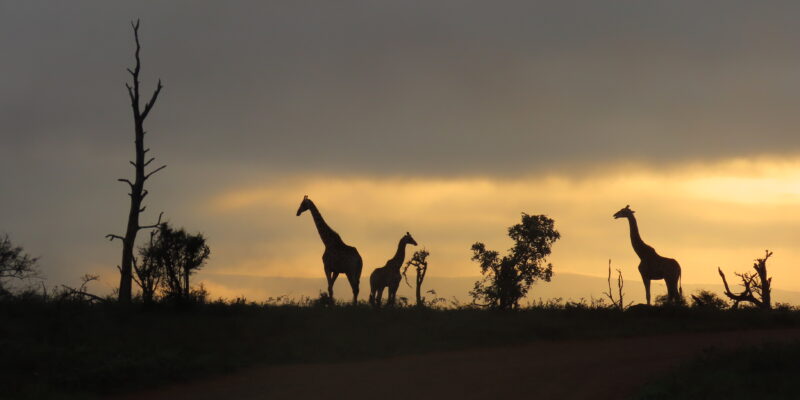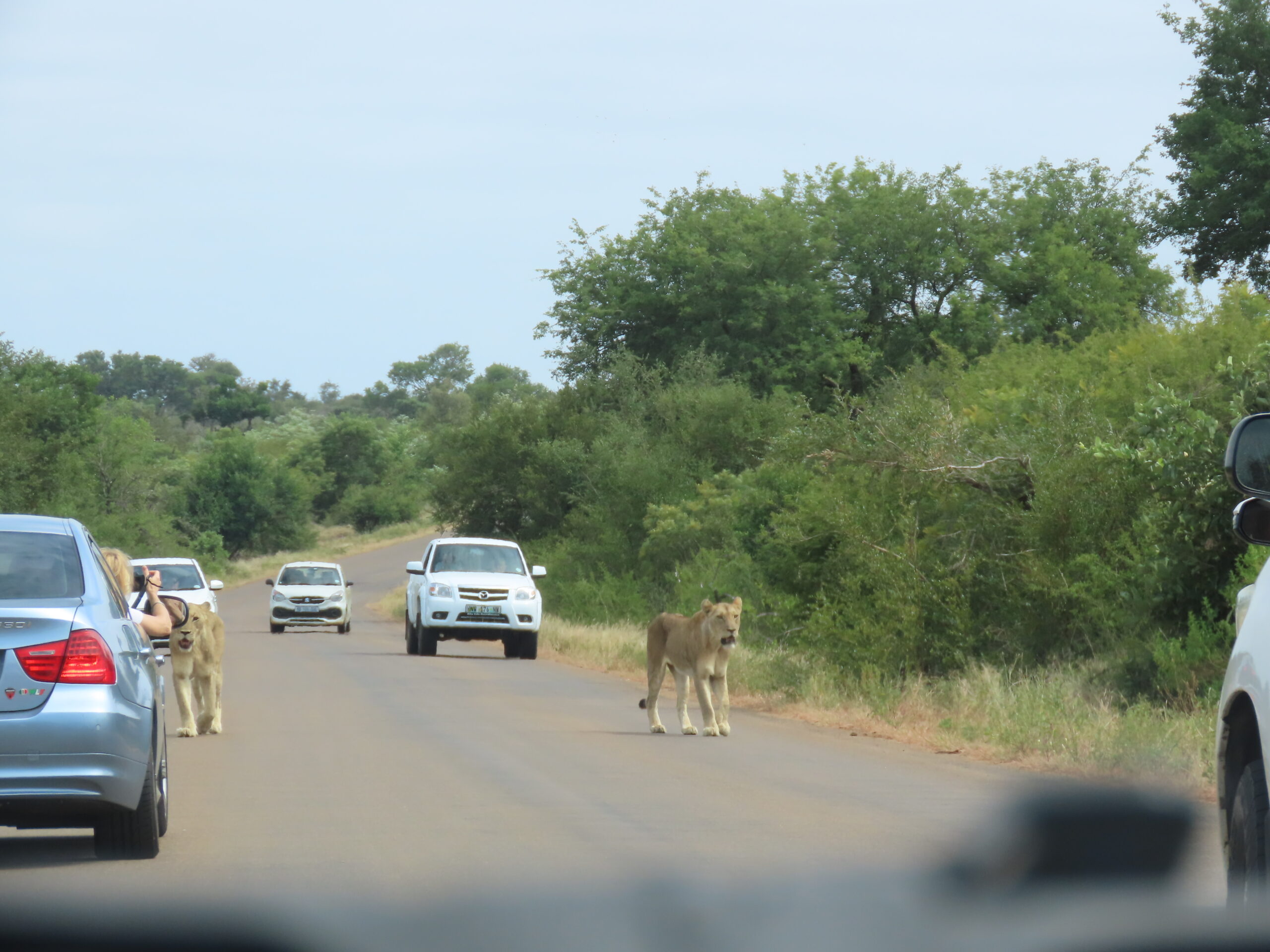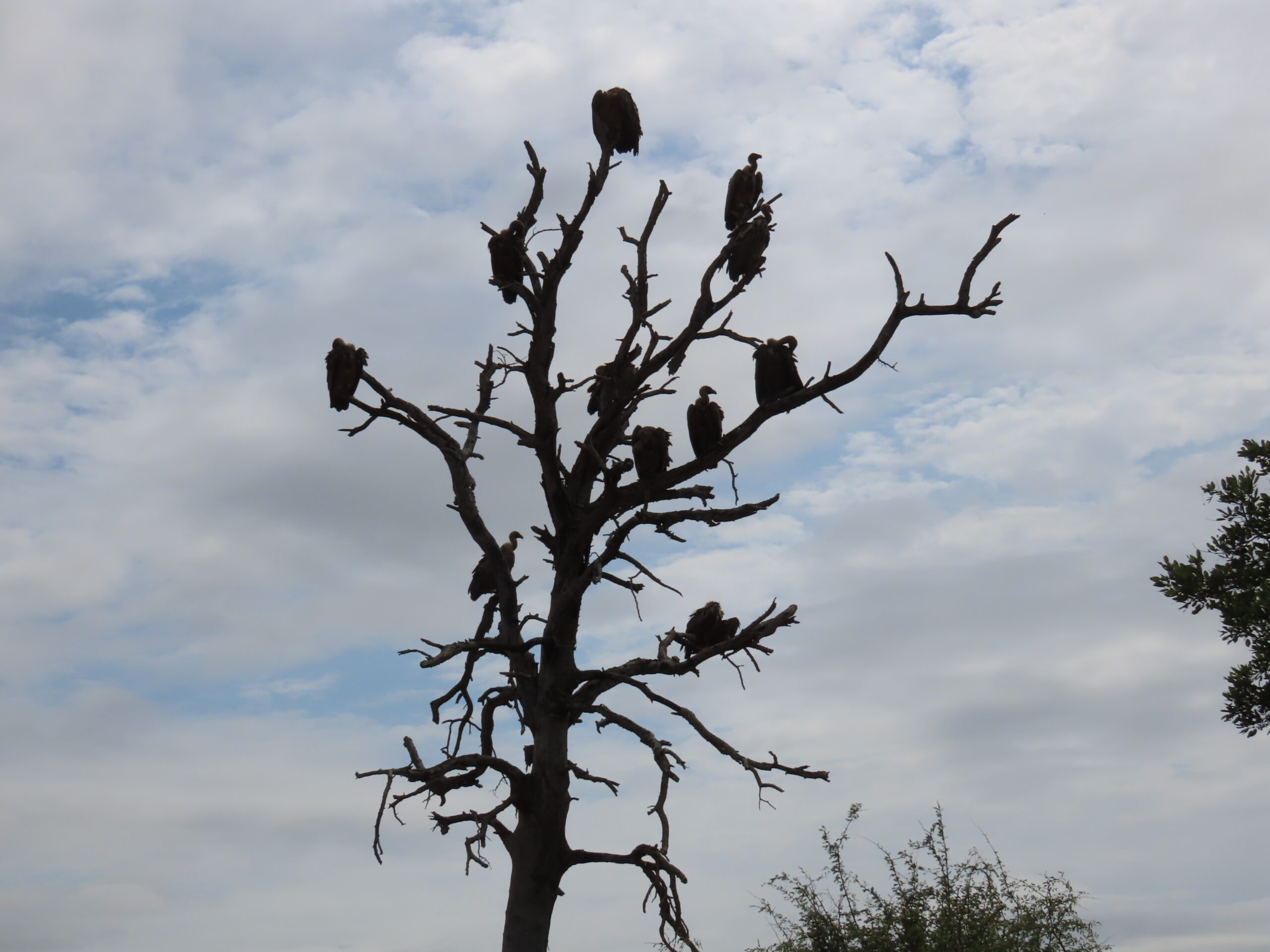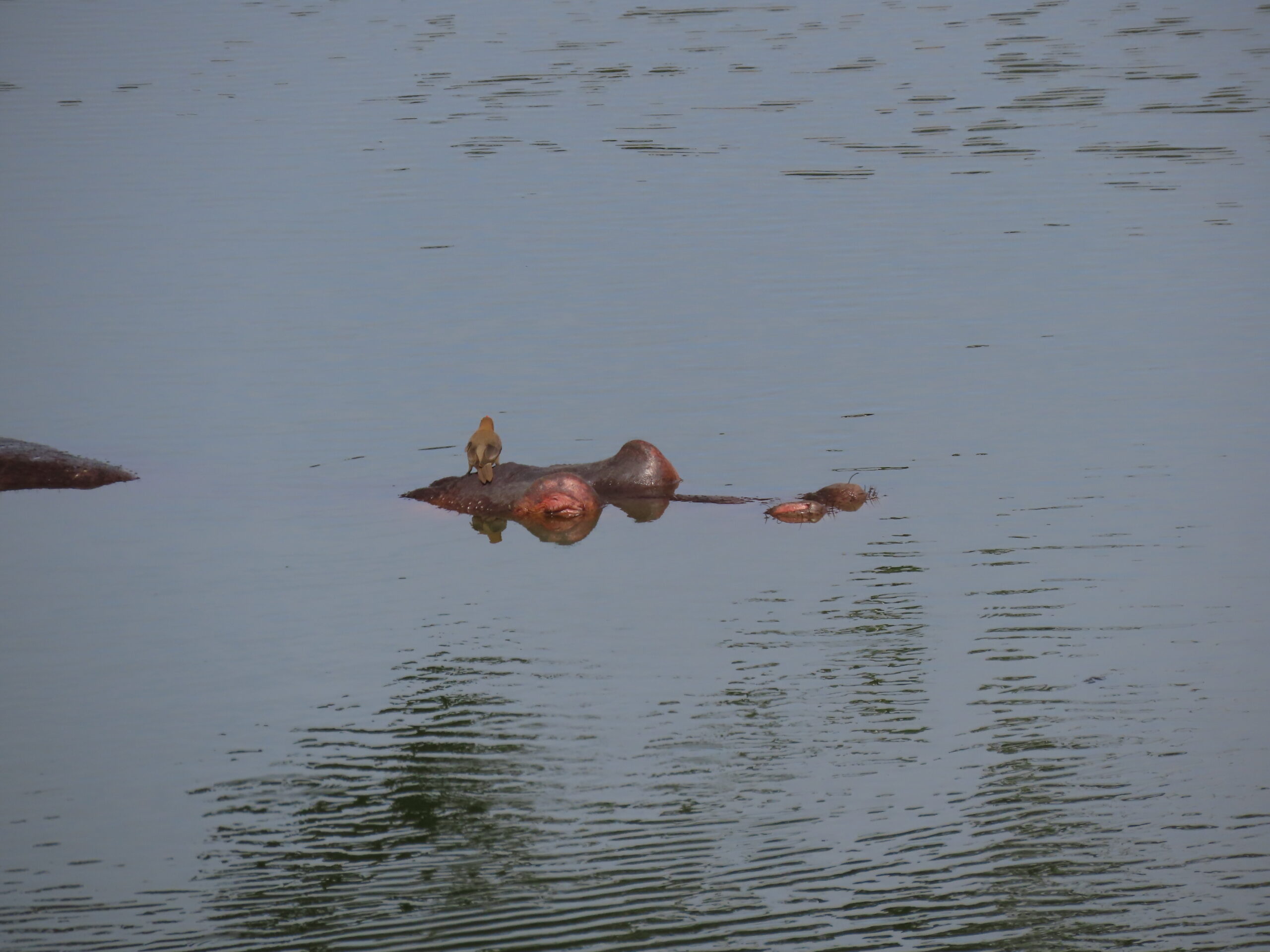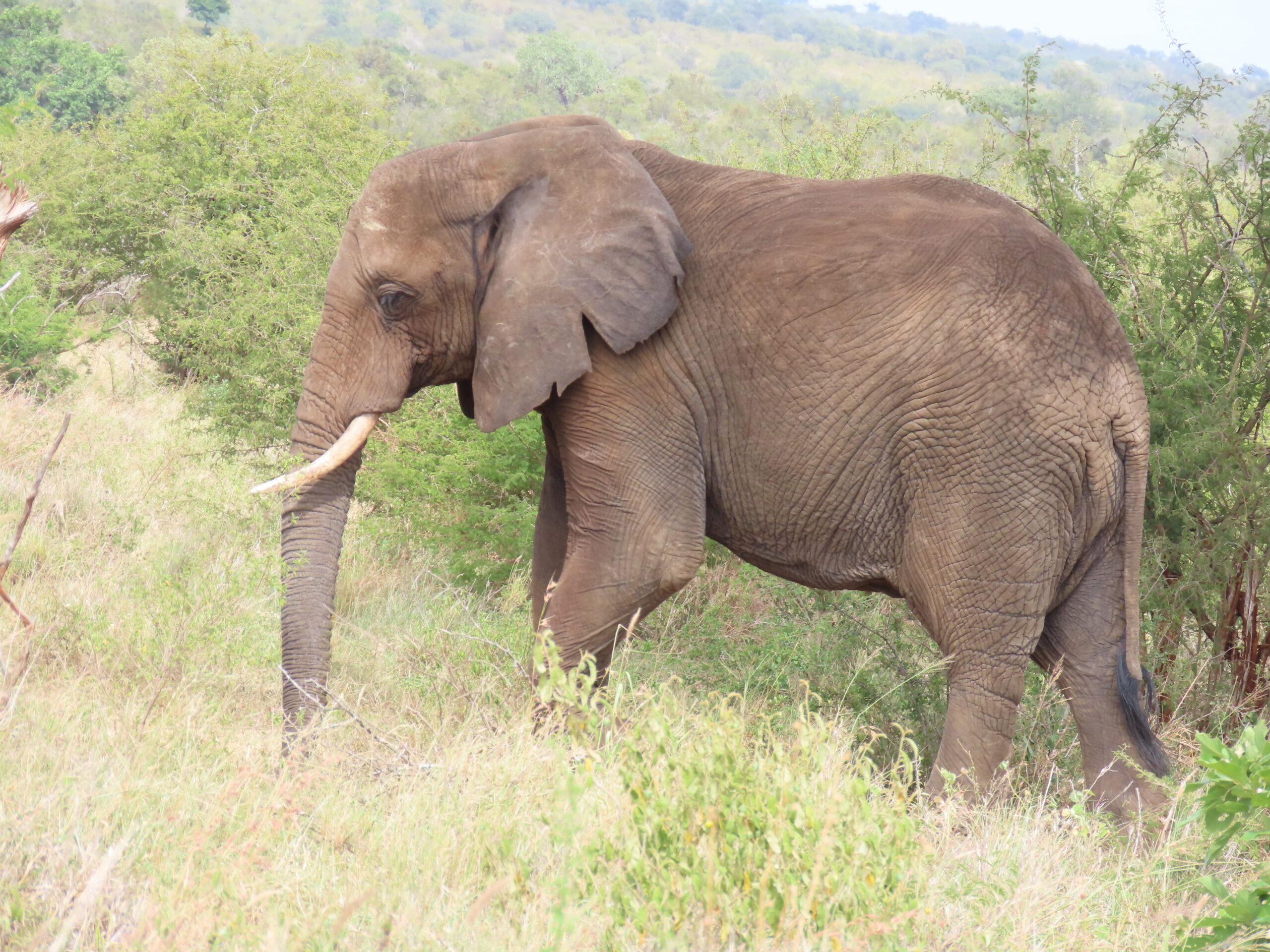
Being ready to head out the door to the safari vehicle at 5:00 am was a bit challenging. Still, the three of us managed to be prepared to go when Martin, our Kruger guide, arrived in the 10-person safari vehicle with two other guests already in tow.
We were concerned that in a 10-person vehicle, one or two of us may be stuck in the middle of three seats across and unable to take photos easily. As it turned out, there were only five of us. Lisa and I sat in one seat with Tom alone in front of us. We’d have no problem taking photos from our prime positions in the tiered seating game drive vehicle.
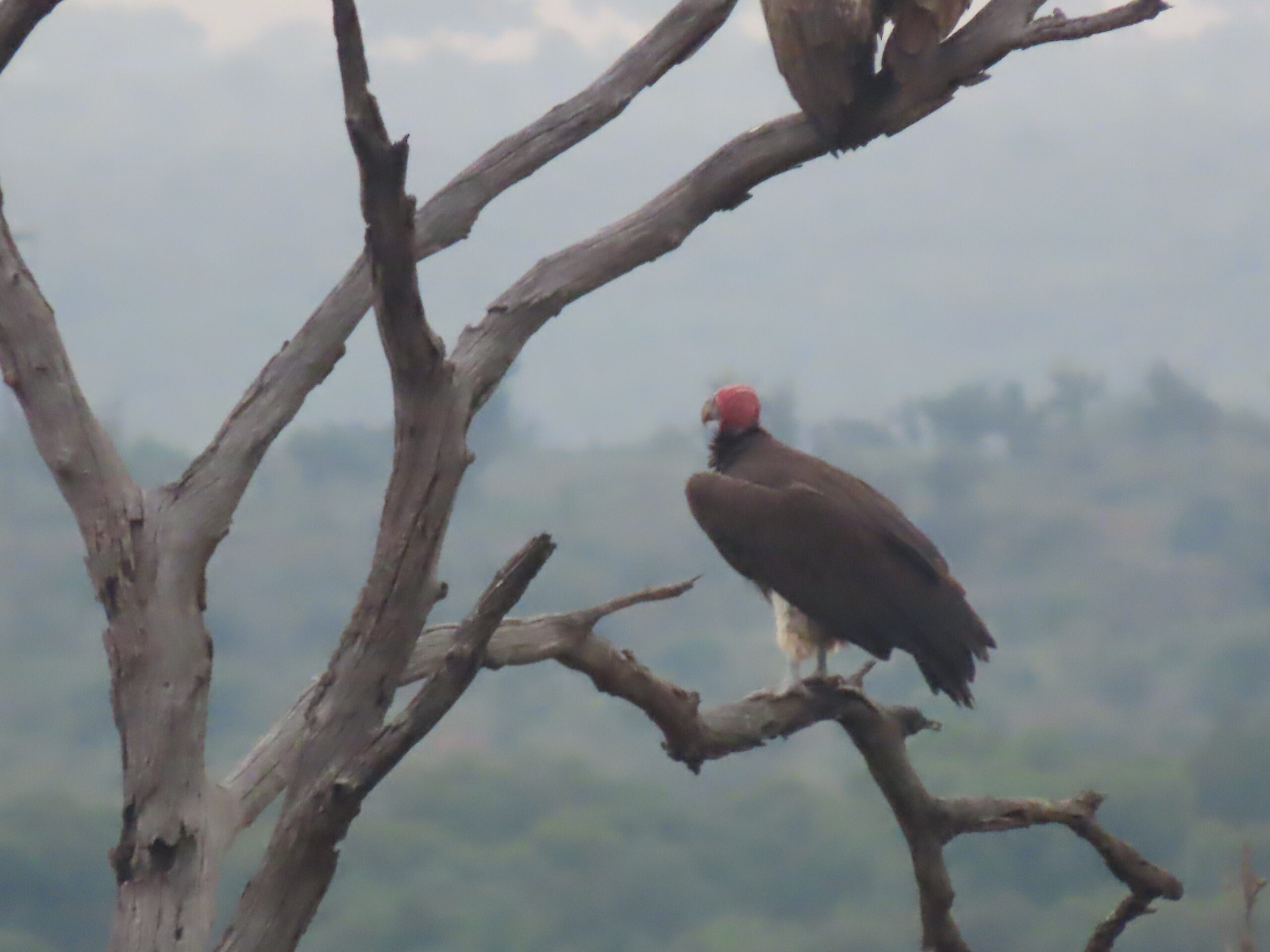
Since it was so early in the morning, the 20-minute drive to the Crocodile Bridge Gate was windy and cool. We’d all bundled up in layers and wore hats, and the time passed quickly while we were cool in the early morning temperatures.
Once we arrived at the gate, the guided safari vehicles were first in line, while tourists self-driving were in another row. By 6:30, we were processed and heading into the park. We used our Wild Card annual pass, and Lisa purchased a single-entry pass. Louise had arranged the guided tour at Marloth Park Info Centre for the six-hour morning game drive at the cost of ZAR 980, US $50.33.
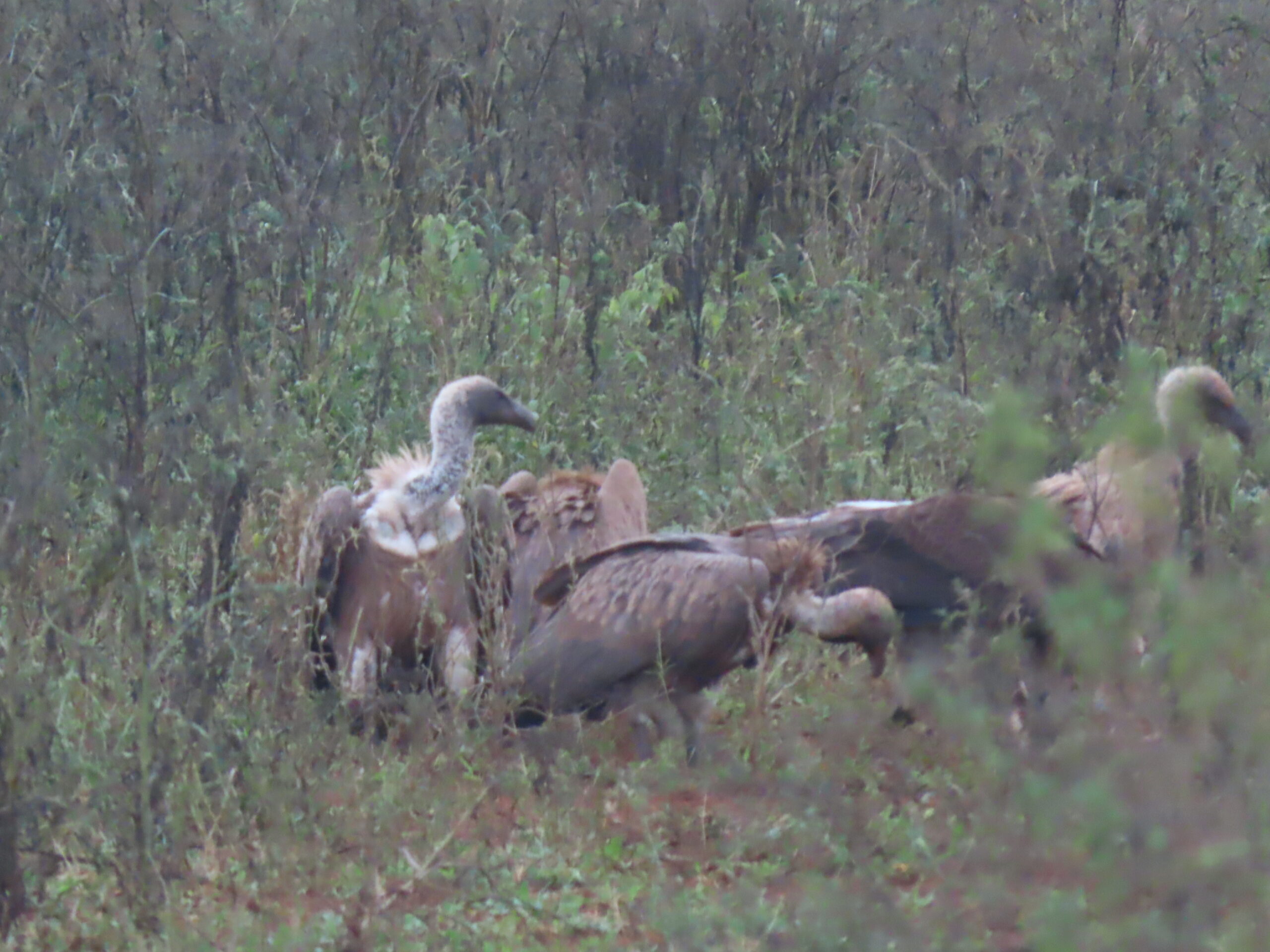
Although we saw four of The Big Five with no rhinos in the areas we traveled since they’ve all been moved for safety reasons (to avoid poaching), we didn’t see a tremendous number of animals, not as many as we often see when we do a self-drive.
However, the sightings that Martin pursued after communicating with other drivers were worth the long distances we drove to specific locations. There, we saw the elusive leopard and, later, further away, male and female lions with a Cape buffalo kill.
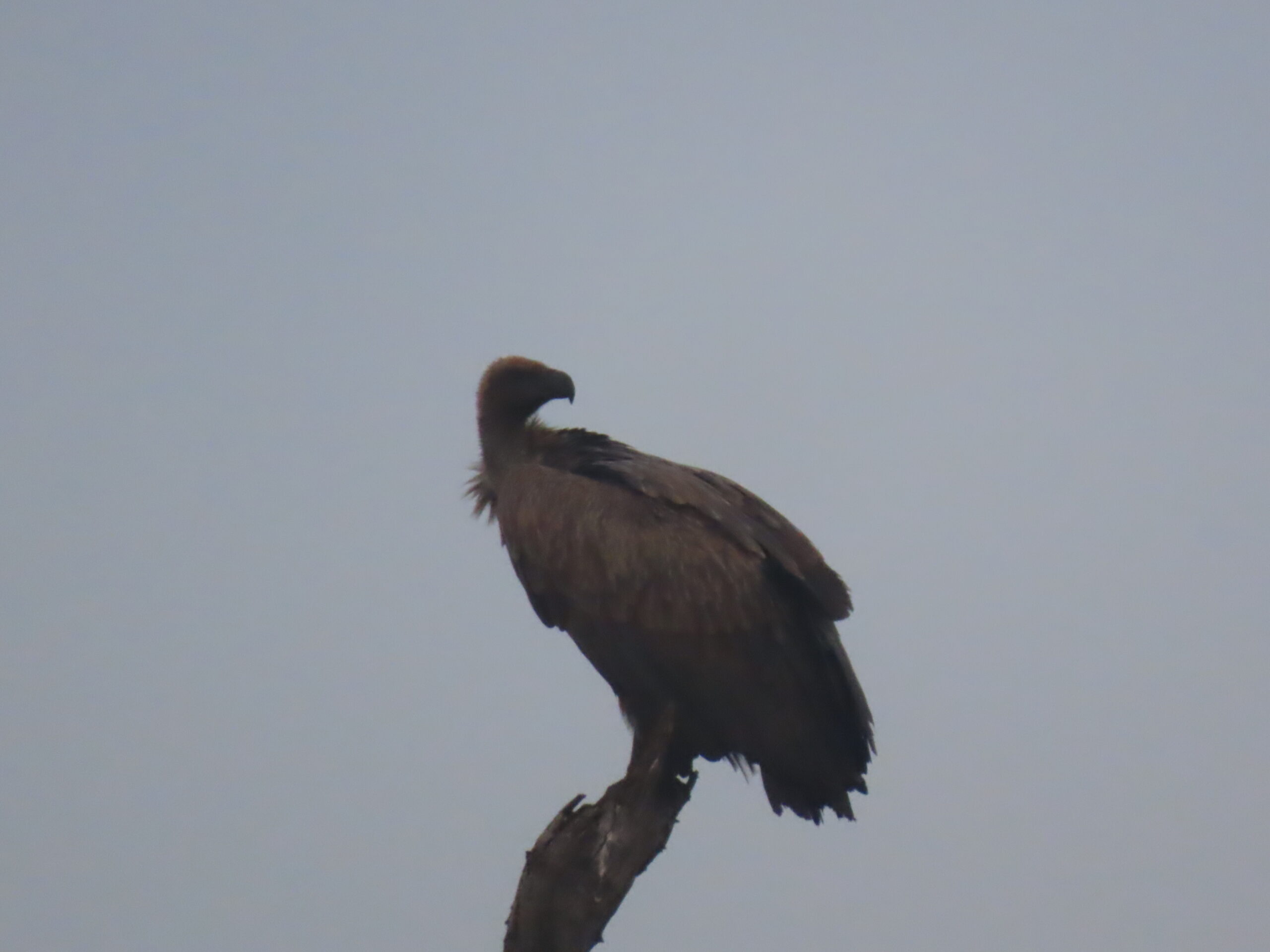
We spent most of the six hours racing in the bouncing vehicle. My Fitbit registers the bouncing as if it were steps. At the end of the six hours, my watch registered almost 6000 steps when we only walked from the parking lot where Martin parked the vehicle to the Mugg & Bean restaurant in Lower Sabie, where Lisa and I had an early lunch. Tom wasn’t hungry and didn’t order.
An hour later, we were back on the road, with multiple elephant sightings in the process, as we returned to the Crocodile Bridge, where our six-hour tour was ending.
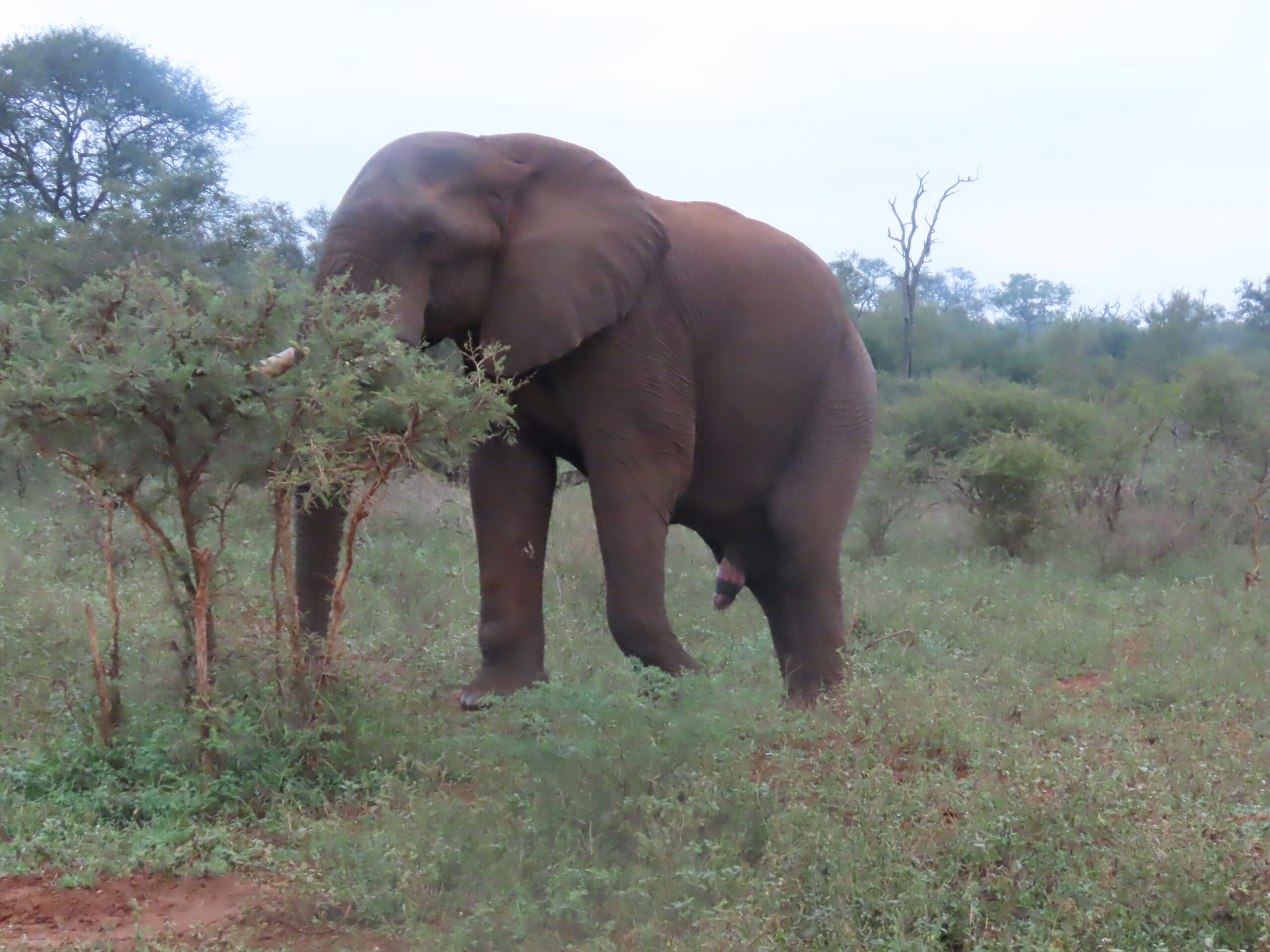
We generously tipped Martin for a good day and were anxious to get in the house to review our photos. Later, we had a lovely dinner, and we all headed to bed early to make up for lost sleep. For the first time since we arrived, I slept well for over eight hours, woke up refreshed, and was ready for a new day.
The three of us are seated at the table on the veranda using our laptops. Tom is listening to podcasts using his earbuds, and Lisa and I are working on our respective websites, posting photos and information about our safari day. Here’s the link to Lisa’s site.
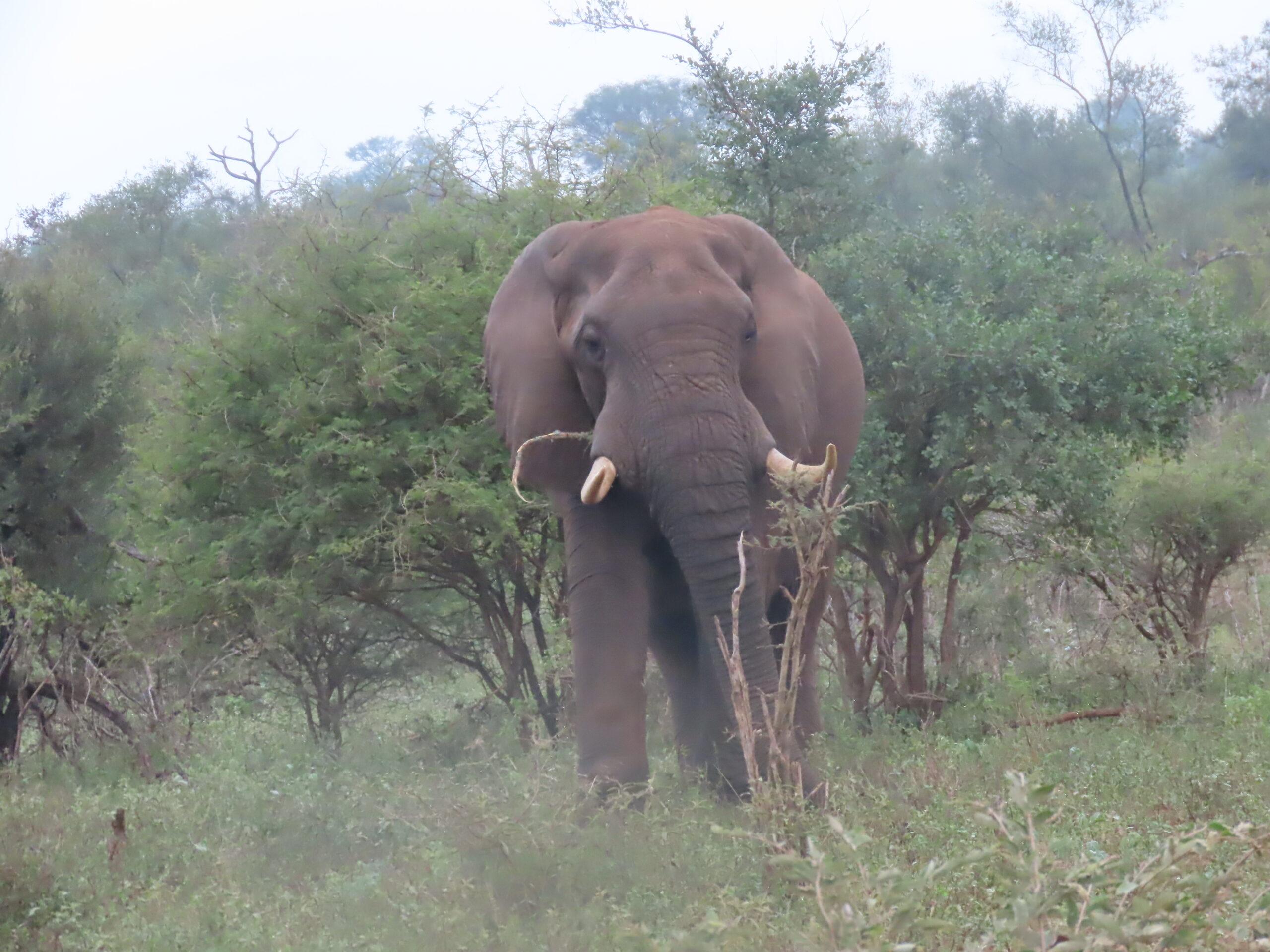
Tonight, the three of us are going to Girafe Bar & Grill for dinner and then “quiz night,” a three-hour group trivia game with many other locals and tourists in attendance. The locals take this game very seriously, so it should be fun.
We’ll add the remainder of our many photos over the next several days. Please check back.
Be well.
Photo from ten years ago today, April 8, 2015


